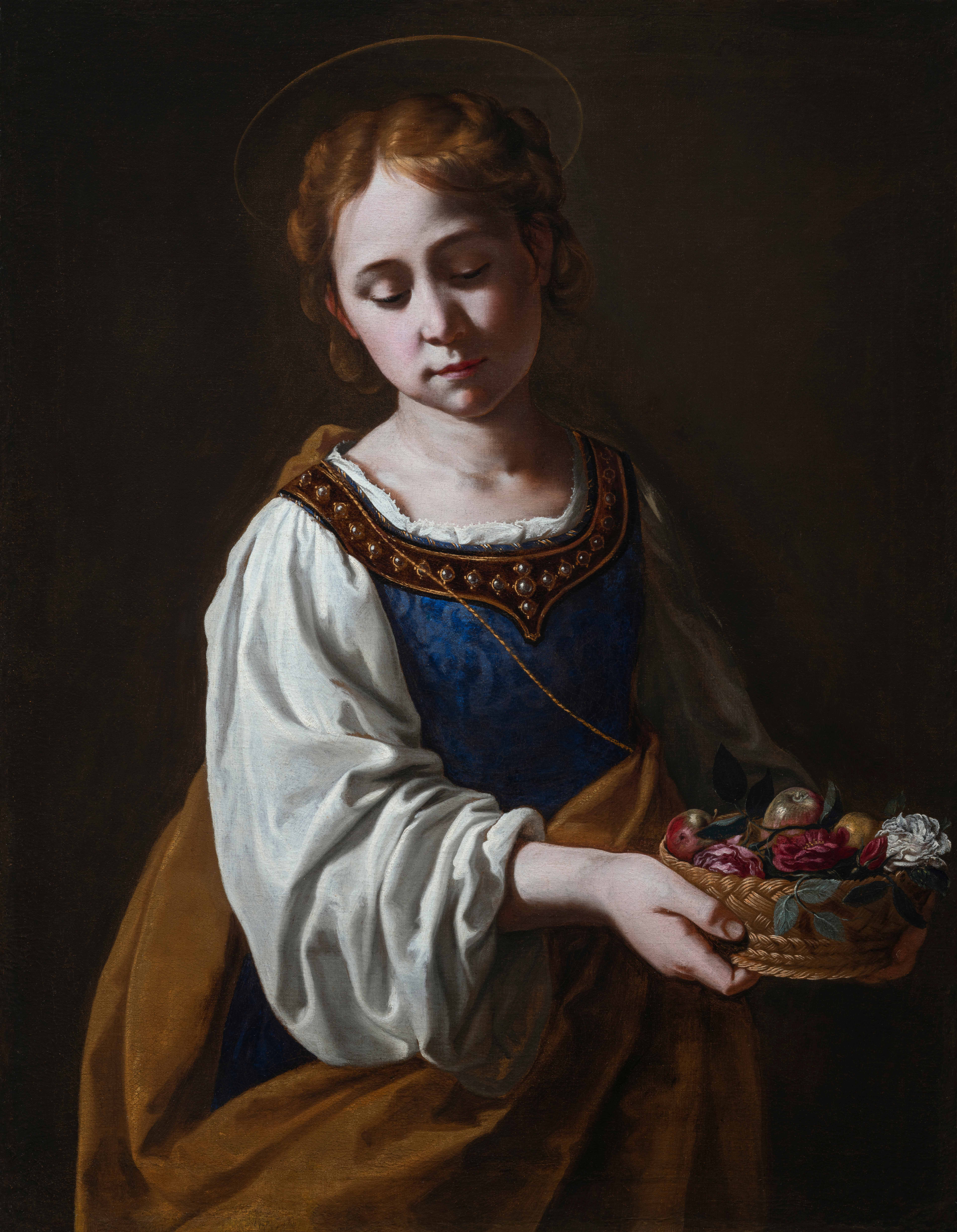Christie’s, London, 6 April 1984, lot 79;
With Bob Haboldt, Amsterdam, 1987;
Christie’s, London, 9 December 1988, lot 27;
Private collection;
Pandolfini, Florence, 20 November 2024, lot 29;
Where acquired.
Oil on canvas, a cartouche on the back: ‘No 2, Sta Rosa de Sulvaran’
81.2 x 63 cm

This unlined and beautifully preserved Saint Dorothea by Antiveduto Gramatica is arguably one of the earliest and most iconic examples of early 17th century Roman Baroque painting.
The subtle, naturalistic chiaroscuro clearly influenced by Caravaggio – the latter worked in Antiveduto’s studio on his arrival in Rome – coexists with the idealised elegance that is a persistent feature of the artist’s Mannerist beginnings. If it were not for the halo, which identifies the young girl as a saint, one could interpret the subject as the type of allegorical or profane portrait made popular in Rome by Caravaggio: naturalistic depictions of young sitters with still life elements of fruit and flowers - such as the so-called Sick Bacchus, the Boy with a basket of fruit (both seized in 1607 by Cardinal Borghese from Cavalier d’Arpino) or the Bacchus painted for Cardinal del Monte.
The complex mixture of stylistic influences and the understated simplicity of this Saint Dorothea converge to create one of the undisputed masterpieces of Gramatica’s production (and, perhaps, of Roman painting in the 1610s). Significantly, when Gianni Papi published his monograph on the artist in 1995, he chose the present picture as its front cover.